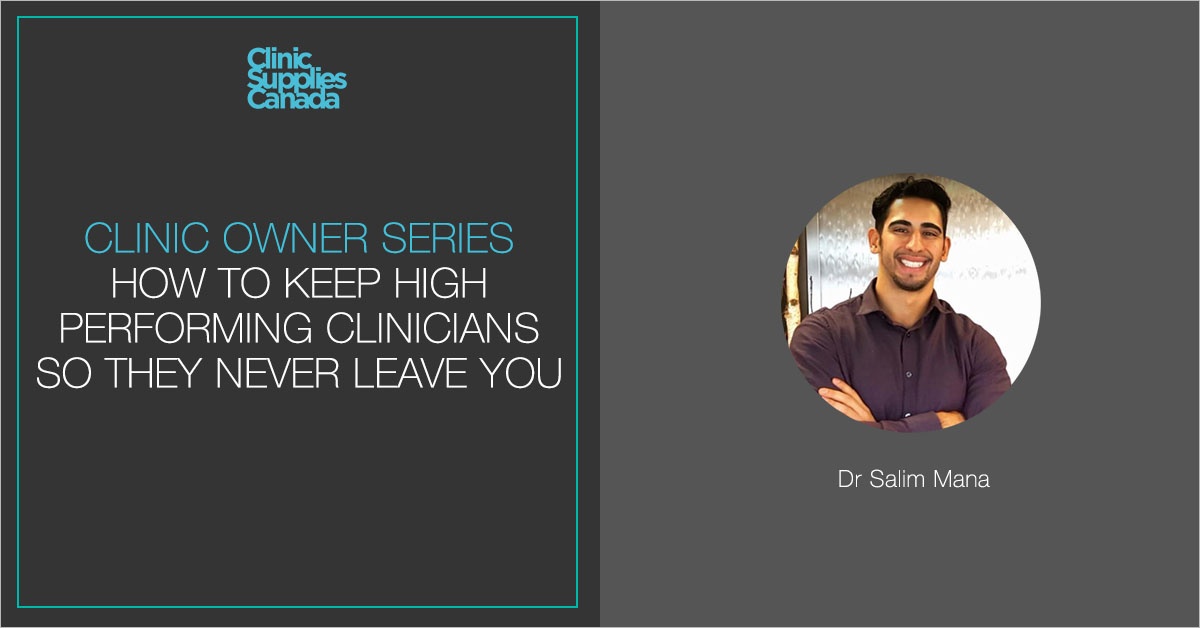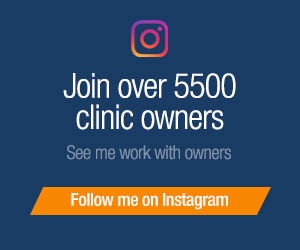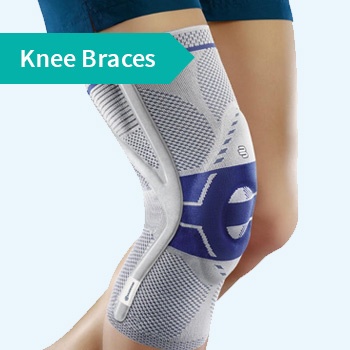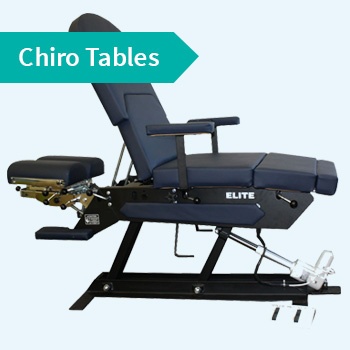
Have you ever wanted to know how to keep high performing clinicians that help you grow your business and drive more patients?
In today’s fiercely competitive marketplace your clinicians have to engage with your business. It's no longer okay to just have a good clinician who is good at their craft. They have to provide a great patient experience AND help grow your business.
But how do you keep high performing clinicians that help you grow your clinic? Today's interview is with a high performing clinician, Dr. Salim Mana. He’s the type of high performing clinician that you want on your team. Listen to what he is looking for in a clinic and what would motivate him to stay.
In this interview, you'll learn:
- The two primary drivers of a high performer. Harness this and they’ll love working with you and never leave.
- The key factors this breed of clinicians look for when choosing where they work.
- How to find great clinicians when there are shortages (knowing this will give you a huge edge over your competitors).
- The #1 challenge they have when transitioning from school to private practice so you can make the transition easier (most don’t tell you this).
And more!
Let’s deep dive into Salim’s interview
1) Why were you inspired to be in a chiropractor?
I got into this field because my mom suffered for years with pelvic problems. She went to a Chiropractor and I was amazed at the results. After seeing this I began to shadow a Chiropractor - he even treated me a couple times so I could experience being a patient. Right then I knew I wanted to be a Chiropractor and then went on to graduate from New York Chiropractic School by age 24. It was a fantastic school that was very ‘hands on’ so it gave me deep experience and the confidence I needed to treat patients.
2) Talk about your practice and why you decided to work there. What are the key factors professionals like yourself look for to build a practice?
Since I just entered the profession, I want to gain as much experience as possible in the fastest time possible. So now I'm working at 3 clinics, seeing different kinds of patients. It’s a great experience because I get to see what’s working now across three different clinics and will be able to apply that to my business in the future.
When choosing a clinic to work with I knew exactly what I wanted. The clinic needed to be near a medical center that has been established there for at least a couple years.
Also, I want to able to engage with different health professionals to provide the best treatment plan possible for my patients. So I wanted the clinic to be in a multidisciplinary setting. And last it needed to be near my city where I grew up. This made it so much easier to build up my clientele. I'm very active on social media and constantly posting every week. I do this so everyone in my network knows what I do and when they get injured they'll think of me or refer someone to me.
3) What advice would you give a clinic owner on how to hire talented healthcare professionals (like you) when there is a massive shortage.
They need to understand what the two primary drivers are. Clinicians want to feel valued and grow professionally. They need to see that there is a way to grow in your clinic.
If they don't see this they will look elsewhere. Mentoring is a powerful way to make them feel valued and grow. You see, many clinicians can feel overwhelmed in the beginning and really want to have someone who can give them advice in these situations.
For example - help them troubleshoot patient problems, how to manage patient expectations, and how to keep patients from self discharging from their plan of care. It shows them you care and helps them learn more rapidly. It's much harder to leave a mentor than a boss.
4) How was the transition from school to the real world private practice?
The transition from school to private practice was a big challenge. School did a great job teaching me the technical side but didn't teach me the business and how to communicate with patients.
For example, how to manage my time and avoid long wait times for patients.
Another one I had to learn very quickly is how to communicate with patients. This was key.
Knowing what to say, when to say it, and how to say it to keep the patient motivated and hopeful. Also, learning to understand which type of patients respond to different types of modalities, and when is the right time to use them. I soon realized it’s best to always start gentle then slowly push the envelope with treatment.
5) What separates you from other practitioners?
I want to build a great relationship with my patient so I make sure to create rapport by talking about their interests. So few clinicians put in the effort to do this. I believe I'm in the relationship business.
I find out what subjects my patients are interested in and educate them about it. This allows me to build deep rapport and trust.
6) What are the challenges you face with dealing with patient compliance as a new grad?
Yes, patient compliance is a challenge for a new grad. However, I found ways to combat this and get patients following through on the plan. First, you have to understand what their desired outcome really is. For example, not just to fix their back pain but to start playing golf again by June.
Next, you have to set realistic goals and time frames. If you set unrealistic time frames and your patient doesn't achieve it, you’ll lose credibility with them, and they become discouraged from continuing the treatment plan. Third, I learned never to create the same treatment plan for every patient. Each patient has different needs and wants, so you must customize each treatment plan. If you don't, you'll get a lot of very unhappy patients who will tell their friends and family about it.
7) What advice would you give a clinician on patient dropout rates?
Teach them about the treatment and their condition. You can do this by showing patient anatomy visuals and explain how the treatment will benefit their specific condition. Most importantly, be honest with them upfront. Set realistic outcomes and make sure they know what that can and cannot do moving forward.
I'm a very positive and energetic person so I believe it’s important to create a positive atmosphere because you're patients feel it. I notice when I do this I get better results.
Next, you want to always keep your word - when you say you're going to do something, do it. Lastly, make a note of important information about your patients, such as where they vacationed, their children’s names, and important events in their lives. This is a powerful way to create rapport with your patients and develop a great relationship.
Oh, and one more thing. Always greet them with a smile. Doing this subtle thing can change their state of mind, allowing you to set the tone for the treatment ahead.
8) Where do you go to learn more about patient engagement and patient experience?
The one book that helped me the most was "How to Win Friends and Influence People" by Dale Carnegie.
This book teaches you valuable tips and proven strategies to build rapport and get other people to like you. These same strategies can be applied to patient experience but the real learning comes from the experience.
9) What's something you've recently learned about patient engagement that you're really excited to implement?
I recently downloaded a great digital anatomy atlas app for my Ipad. It allows me to show my patients exactly what's happening in their spine. Giving your patient a visual helps them learn and understand easier. Also, I like to share screenshot images from Google, such as stages of disc herniation or muscle strains. This is how my patients learn best.
10) How can people find you or connect with you?
I'm active on Instagram. Just type in "rehab4you (DM)" in the search box and you'll find me. Also, you can contact me on LinkedIn: Dr. Salim Mana.








